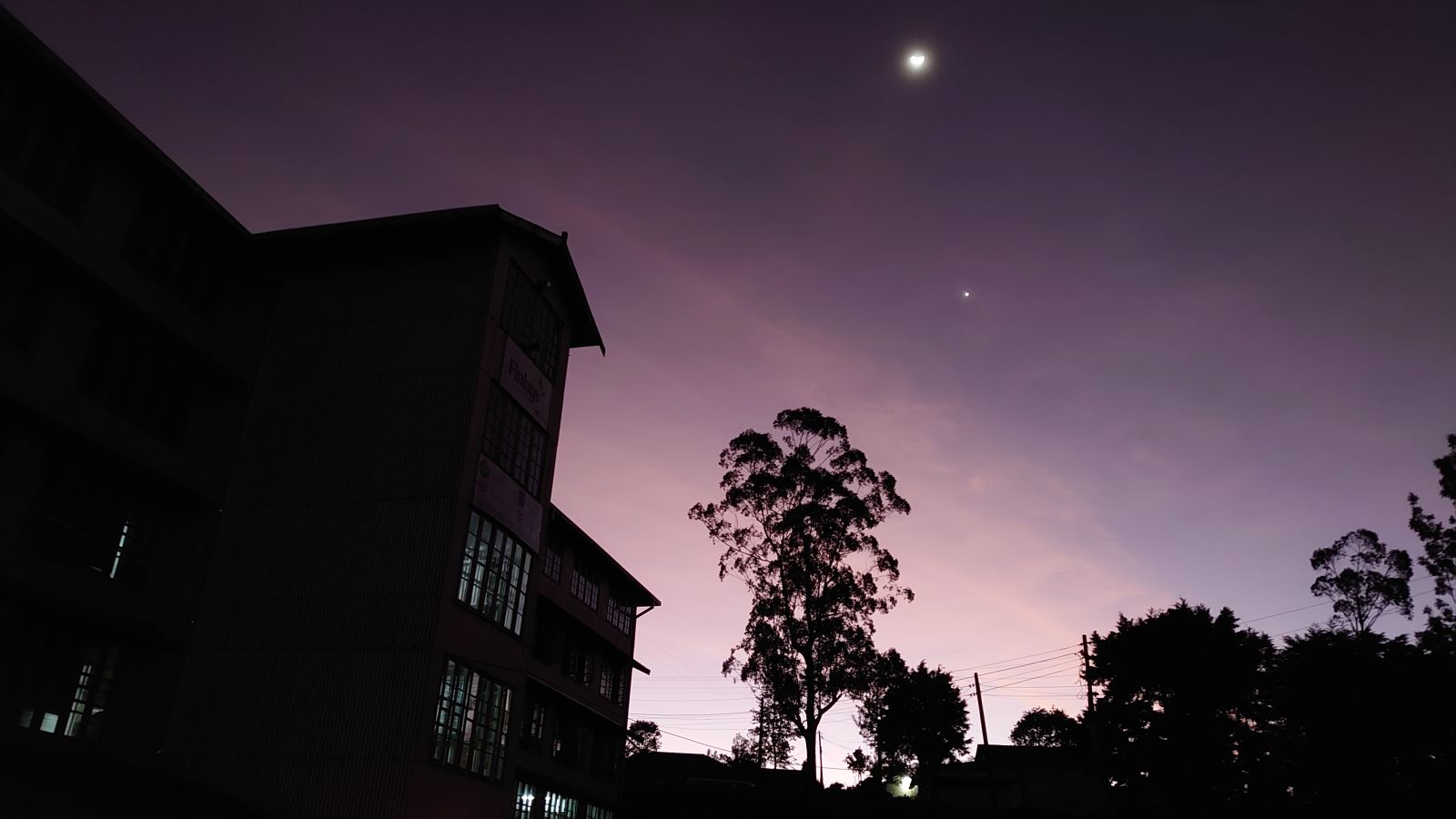New Vithanakande State of the art tea factory
„What means srilankan tea grades“
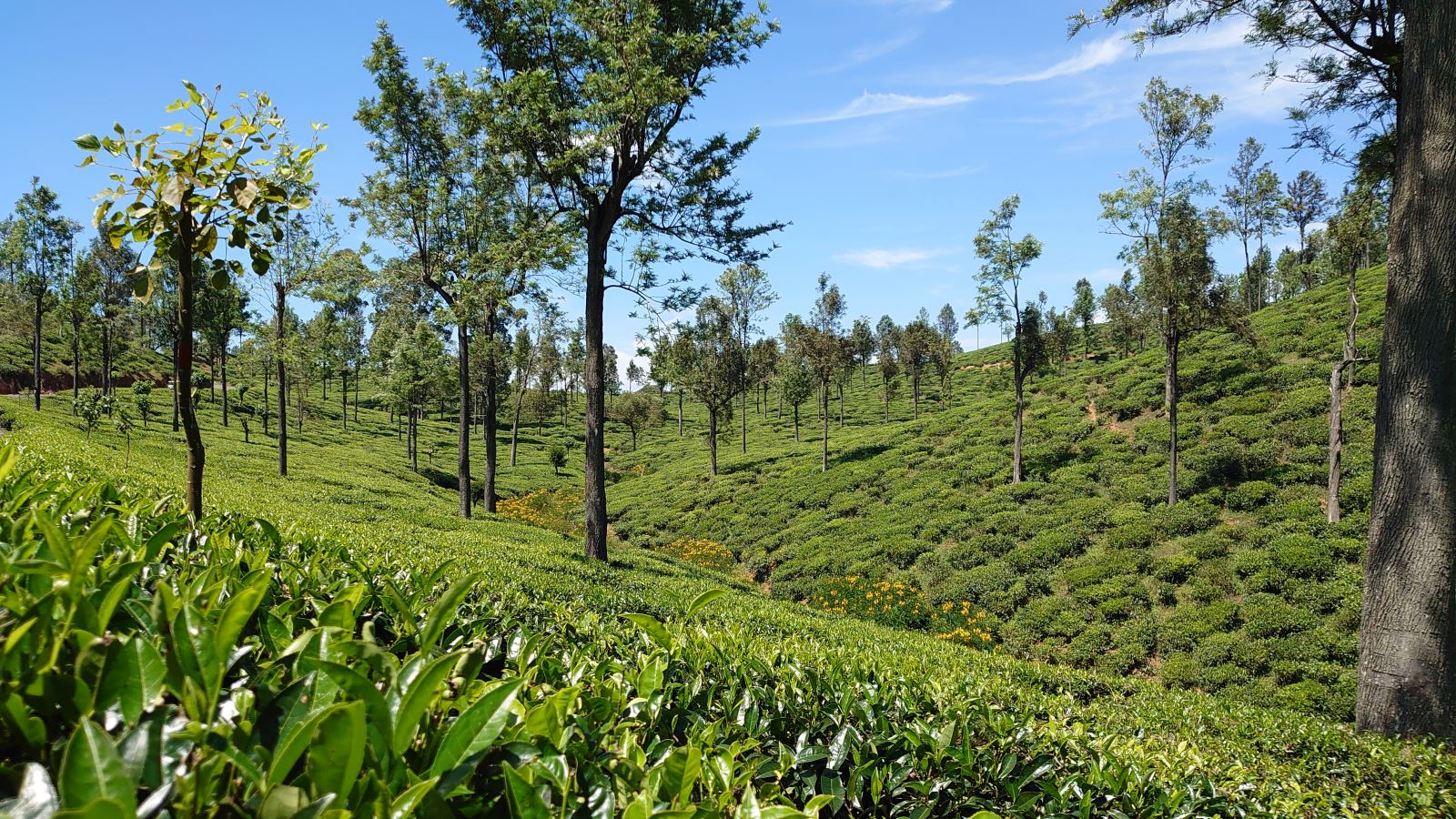 I had a chance to visit two more tea factories during my last visit in Sri Lanka, which are one of the top in the country. Each of them is from other end of altitude aspect of tea areas: New Vithanakande is LOW grown from Ruhuna region and the second one, Kenmare is from HIGH grown Nuwara Eliya. This article is mainly about the first one with a couple of remarks related to other areas as New Vithanakande is state of the art example of best manufacturing standards and producing TOP quality teas.
I had a chance to visit two more tea factories during my last visit in Sri Lanka, which are one of the top in the country. Each of them is from other end of altitude aspect of tea areas: New Vithanakande is LOW grown from Ruhuna region and the second one, Kenmare is from HIGH grown Nuwara Eliya. This article is mainly about the first one with a couple of remarks related to other areas as New Vithanakande is state of the art example of best manufacturing standards and producing TOP quality teas.
I will describe production process with a couple of pictures and the second part I will try to point out what the grading means in Sri Lanka (and it is not far away for other regions, which use initial letters to grade teas).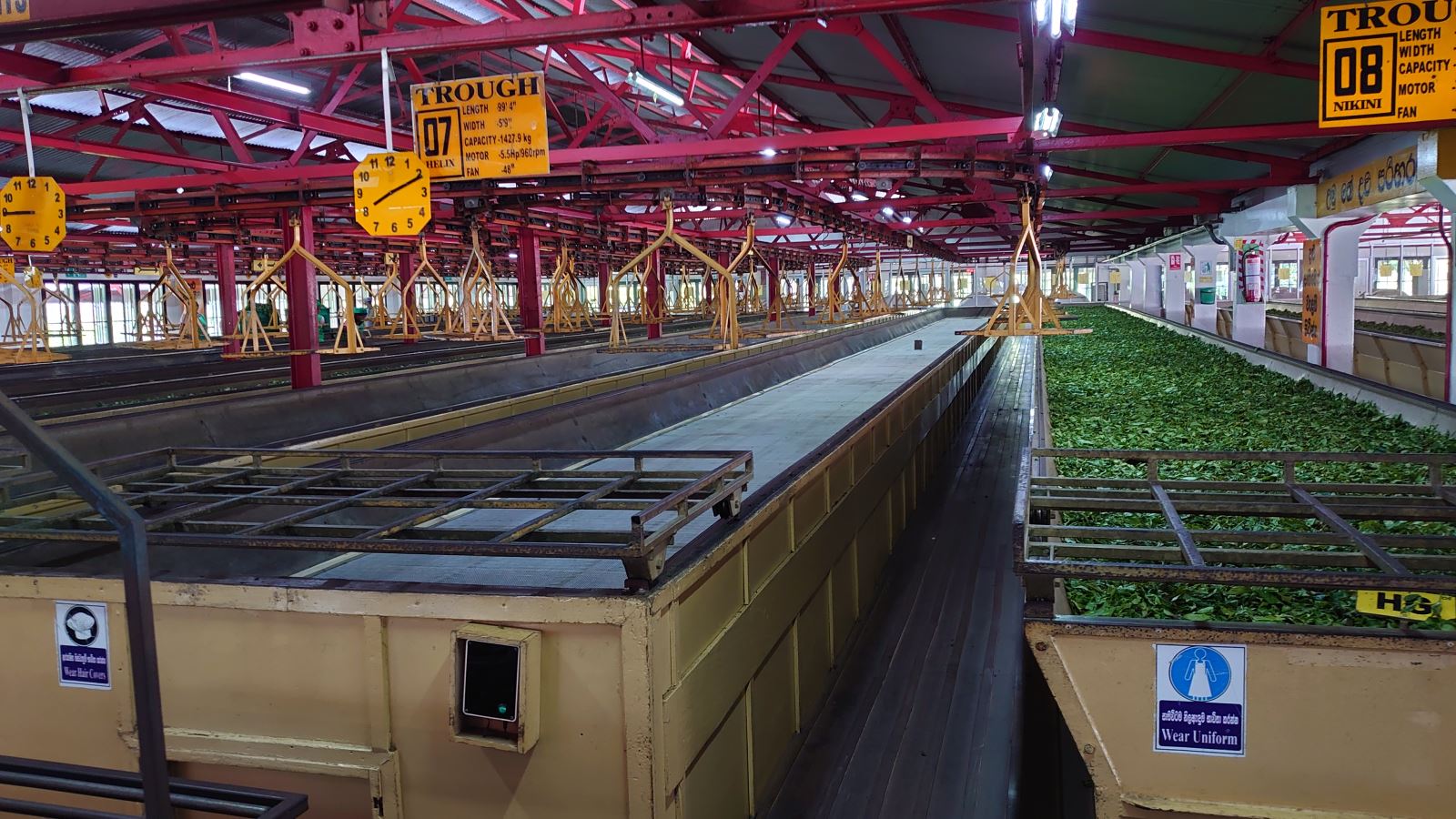
First of all, I like to emphasize each region has own style of tea and it is not right to think one region produce better tea than the other. There are just different in taste and style and you can be sure it is not true high grown tea is more expensive than low grown, it can be easily opposite if the factory is good. I personally like low grown very much too. There are definitely differences in same grades from different factories, and that is exactly an aspect of quality of production. If you are not familiar with particular factory and grade and you do not know the others, it is nothing than a name on product and you can trace it in future, what you like, but it does not say anything about quality (and that is exactly the point, why there is 12.000 samples every week judged by export companies to be ready for weekly auction in Colombo).
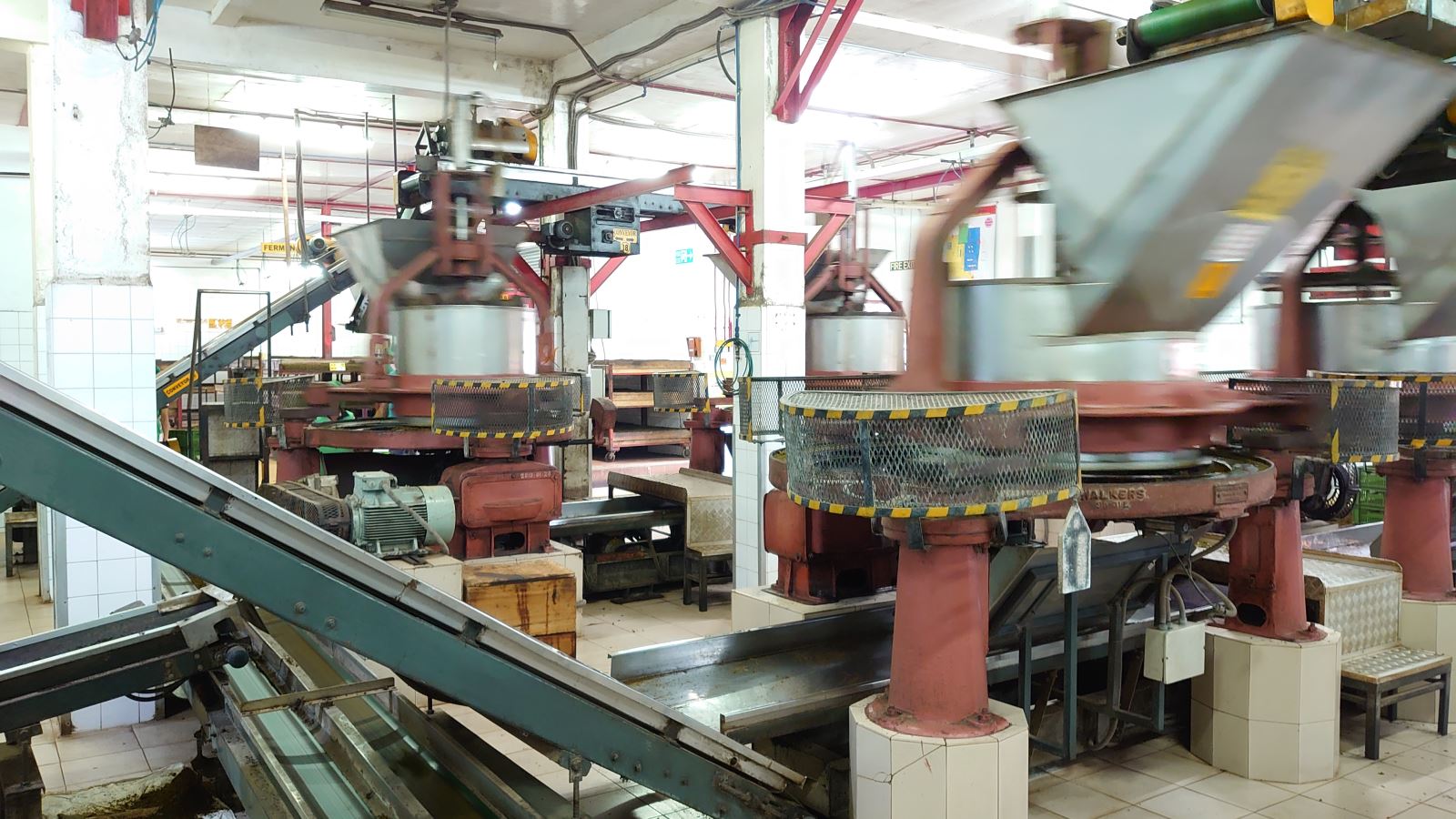 We made this visit based on fact we have Ruhuna teas in offer and particularly from this factory FBOP EX SP (tippy tea, from Altitude Teas range by Vintage Teas). Arrival is in hidden valley and you see only a chimney before you are almost next to factory. The factory is neither big nor impressive compare to many you can see traveling throughout tea regions. But once you enter a property it is quite different. There is an order and high emphasis on detail and quality. You also see deep interest from factory manager. You see it from a first moment you go to withering area (first process in tea production), there are marks when it has been put on beds, from what supplier and as a standard temperature and moisture measuring tools. There is one step before, takeover of fresh leaves, registration, weighing and visual control of delivery (just for an idea, such a factory uses about fifty lorries to collect leaves every day).
We made this visit based on fact we have Ruhuna teas in offer and particularly from this factory FBOP EX SP (tippy tea, from Altitude Teas range by Vintage Teas). Arrival is in hidden valley and you see only a chimney before you are almost next to factory. The factory is neither big nor impressive compare to many you can see traveling throughout tea regions. But once you enter a property it is quite different. There is an order and high emphasis on detail and quality. You also see deep interest from factory manager. You see it from a first moment you go to withering area (first process in tea production), there are marks when it has been put on beds, from what supplier and as a standard temperature and moisture measuring tools. There is one step before, takeover of fresh leaves, registration, weighing and visual control of delivery (just for an idea, such a factory uses about fifty lorries to collect leaves every day).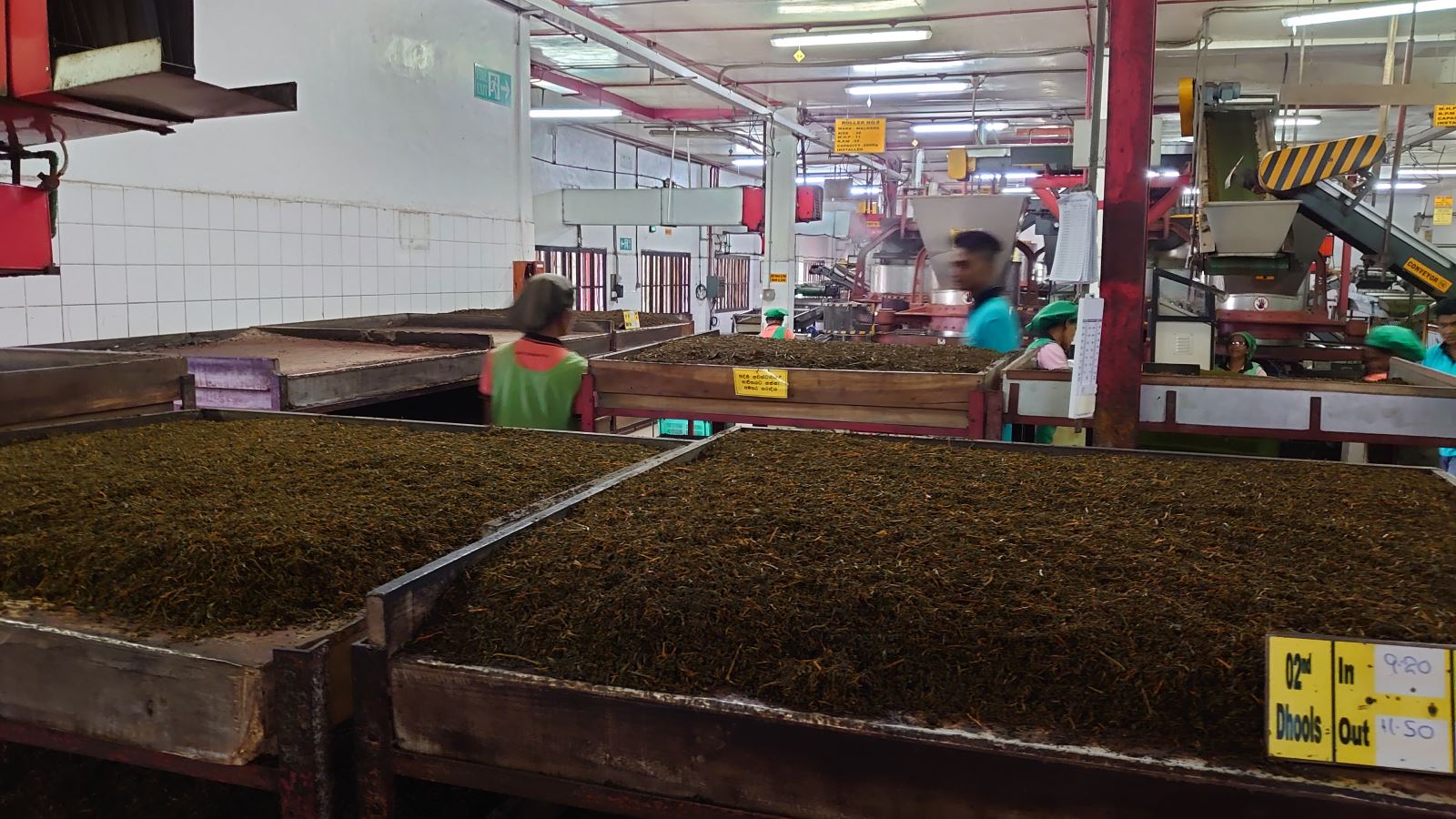
There is next quality control once withering is finished. Employee takes samples of withered tea leaves and sort out oxidised, partly oxidised and unoxidized leaves. This is exactly measured and evaluated percentage shares. Based on this criterion, premiums are also paid to farmers. This is also a great tool for people in the field to give follow up in order improved best practices among farmers. By the way, delivery time from farm to factory is not so critical in low grown areas as for high grown in terms of final taste and quality of tea. Oxidation is caused by unproper handling during tea plucking (during plucking itself or handling in the hand) or further manipulation up to final delivery (on farm weighing, filling the bags etc…). If there is colder or higher moisture (or rainy) weather, it is used residual heat from drying to improve withering on the beds.
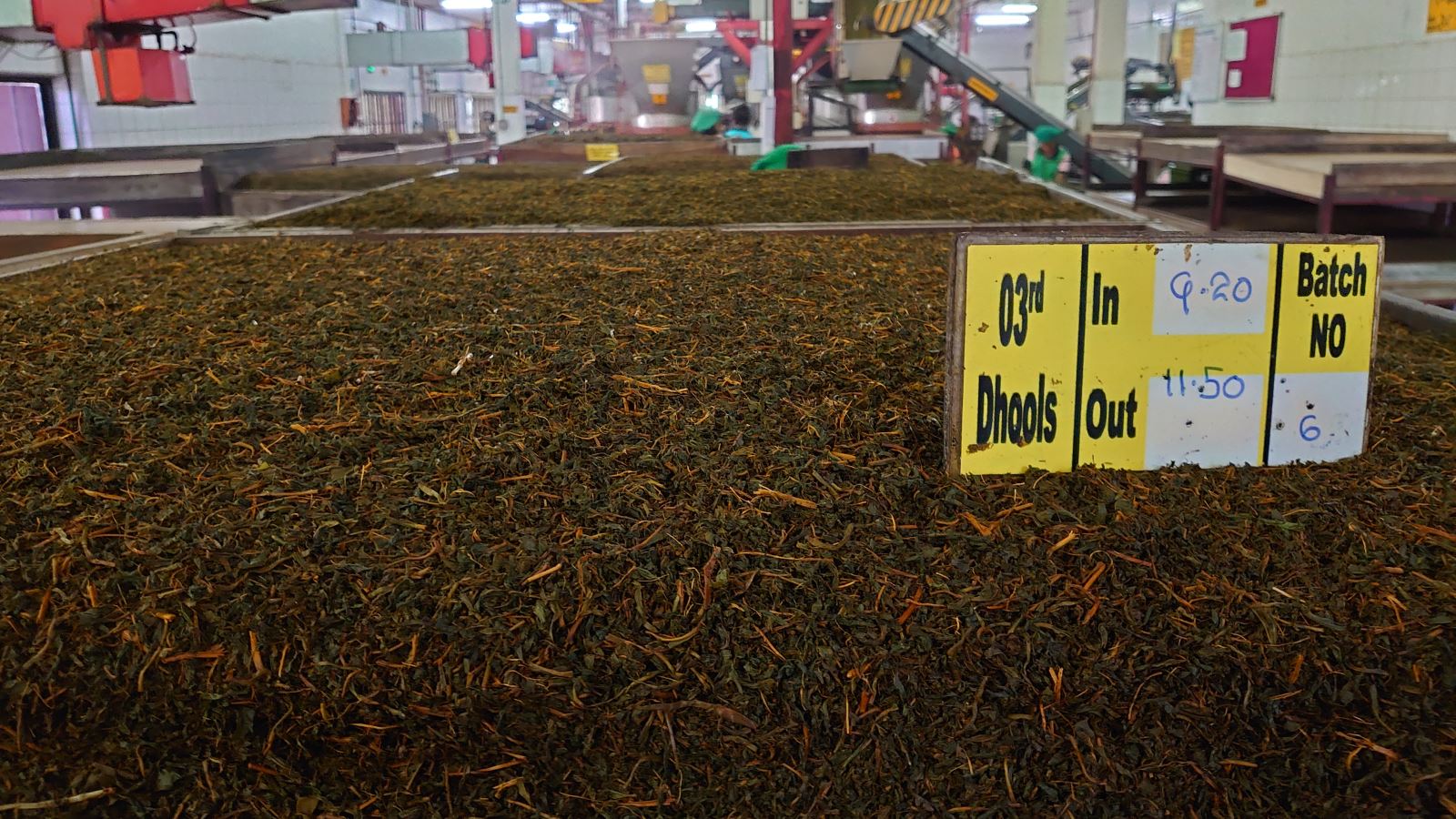 After withering (normally for low grown teas: it takes place over night) leaves are transported to ROLLING. There is a chain of four rollers in New Vithanakande factory, where leaves are gradually rolled. It is the process that with every rolling there is separated good part and insufficiently rolled parts are rolled on next roller. Generally, part with most branches are rolled on all four, compare to the best parts are rolled just once and give best teas. After rolling there is fermentation process (leaves are oxidized), where each part is fermented for different time to reach best results (see picture, where you have indicated time of oxidation for particular batch). During this process positive compounds from polyphenols group are occurring and bring antioxidizing properties to black tea (please keep in mind green teas have others: catechins). Number of rollers in a chain in this factory is quite unique. Normal is three. In some low price countries, you can find only two.
After withering (normally for low grown teas: it takes place over night) leaves are transported to ROLLING. There is a chain of four rollers in New Vithanakande factory, where leaves are gradually rolled. It is the process that with every rolling there is separated good part and insufficiently rolled parts are rolled on next roller. Generally, part with most branches are rolled on all four, compare to the best parts are rolled just once and give best teas. After rolling there is fermentation process (leaves are oxidized), where each part is fermented for different time to reach best results (see picture, where you have indicated time of oxidation for particular batch). During this process positive compounds from polyphenols group are occurring and bring antioxidizing properties to black tea (please keep in mind green teas have others: catechins). Number of rollers in a chain in this factory is quite unique. Normal is three. In some low price countries, you can find only two.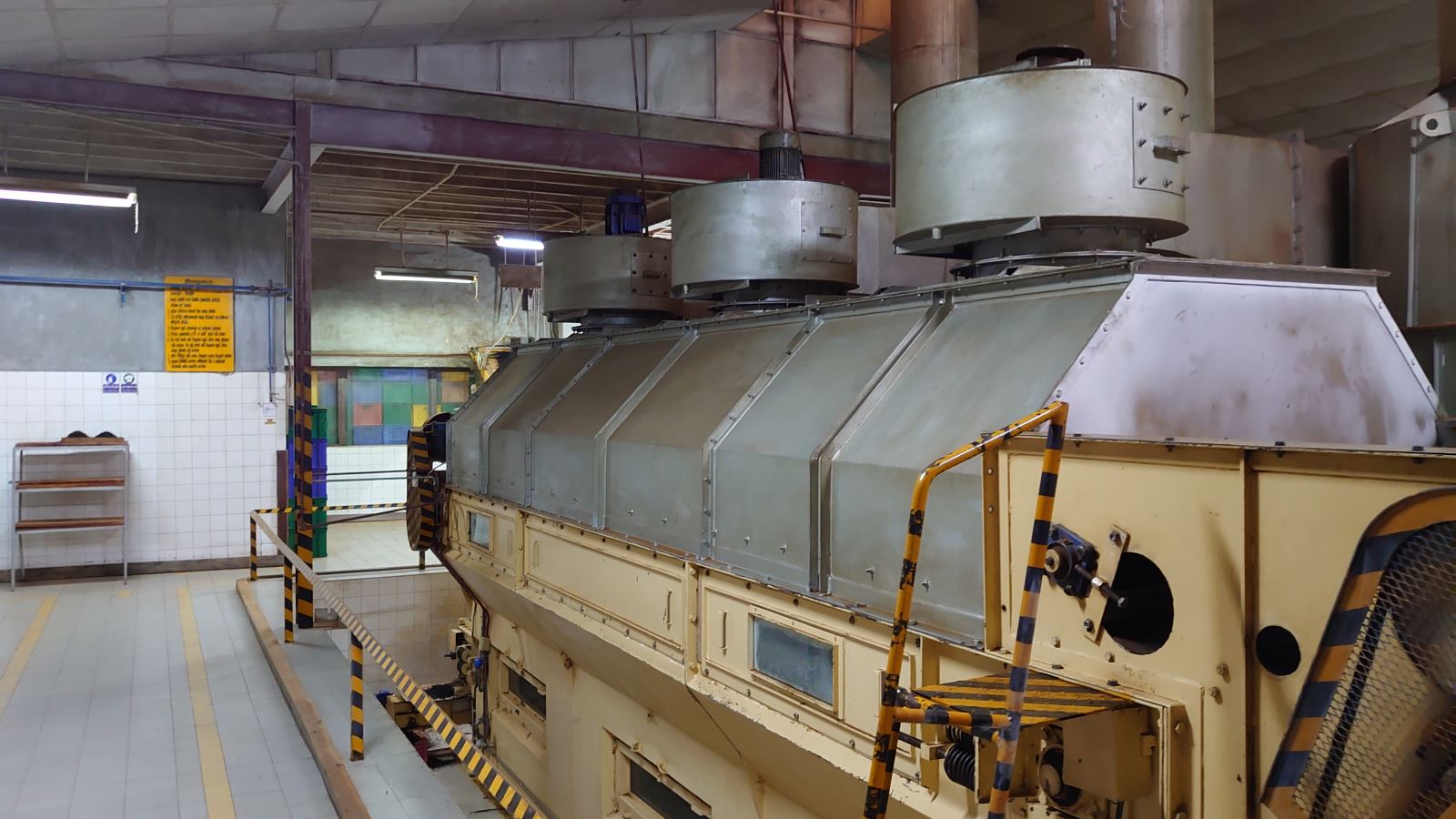
Fermentation is finished in DRYING process (drying room) in up to 120 degree Celsius temperature. During this process, you can see by its name, residual water is taken off and generally the process is finished for tea production.
But this is not the end. There is last very important process: SORTING into grades. It is important to say: sorting is a critical part to make different types of tea with “uniform aroma and make standards for trading. Every grade provides own liquor with colour, aroma and taste properties and of course quality of all grades depends on previous production process and farming/plucking standards. The process is same everyday and deviations are only linked to delivered fresh leaves (some seasonality or amount of rain) and weather conditions. And then sorting makes the final cut of production into tradable and valued products. 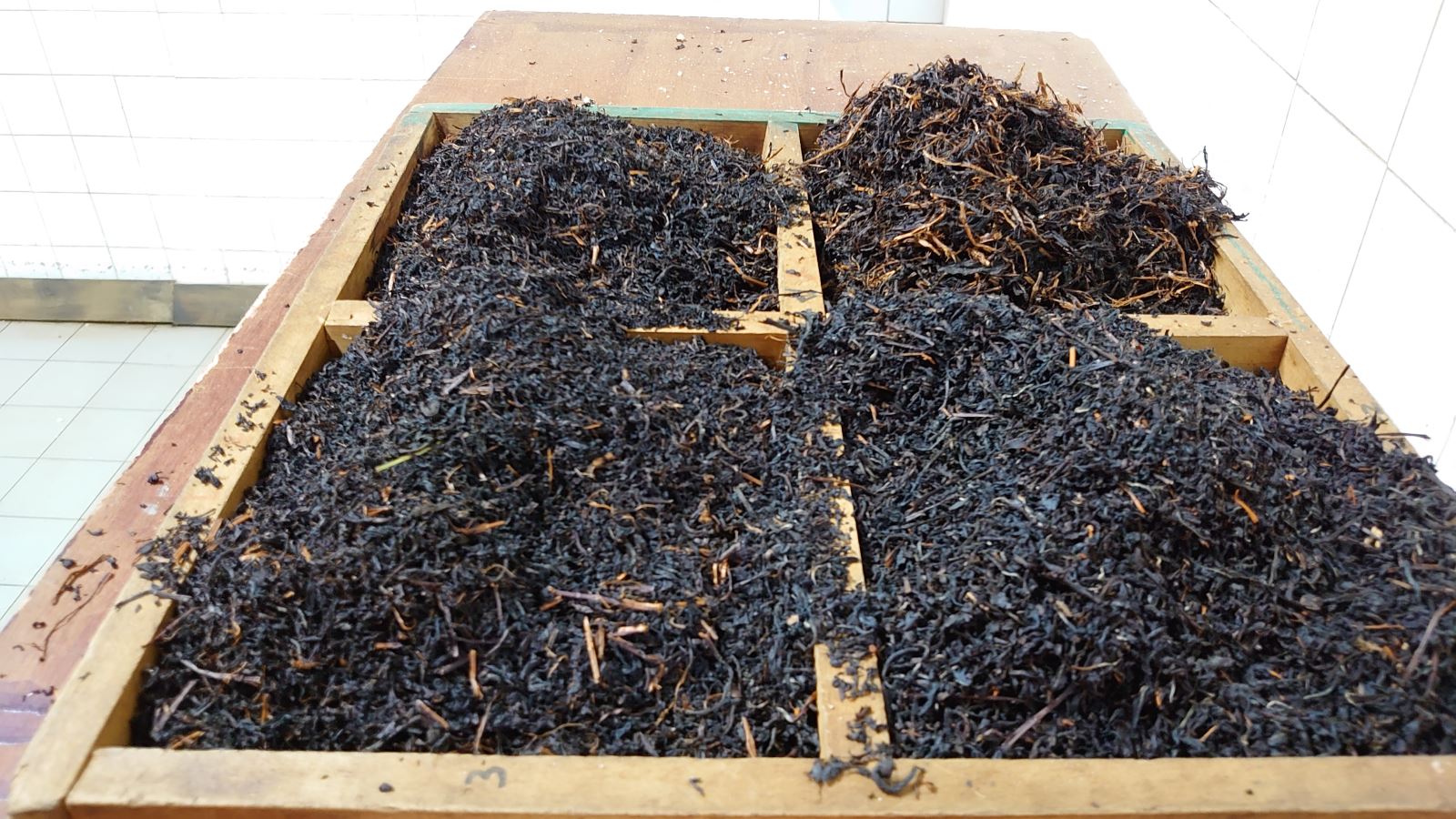 The sorting is developed in quite sophisticated process which really split lower grades from better grades and off grades. That is exactly the way to separate by processing in four batches from rolling into sorting process to get best possible options and material like splitting dust and fannings quality at one end and whole leaves like OP and OP1 at the other end of product grades. And at the end everything is used and nothing is wasted. Pulp is used for heating in some factories even to heat dryer. Off grade with very little remaining leaves on the branches and leafy veins are cleaned or sold to factory producing tea aromas (maybe used in Lipton Yellow Label teabags to bring them tea taste
The sorting is developed in quite sophisticated process which really split lower grades from better grades and off grades. That is exactly the way to separate by processing in four batches from rolling into sorting process to get best possible options and material like splitting dust and fannings quality at one end and whole leaves like OP and OP1 at the other end of product grades. And at the end everything is used and nothing is wasted. Pulp is used for heating in some factories even to heat dryer. Off grade with very little remaining leaves on the branches and leafy veins are cleaned or sold to factory producing tea aromas (maybe used in Lipton Yellow Label teabags to bring them tea taste
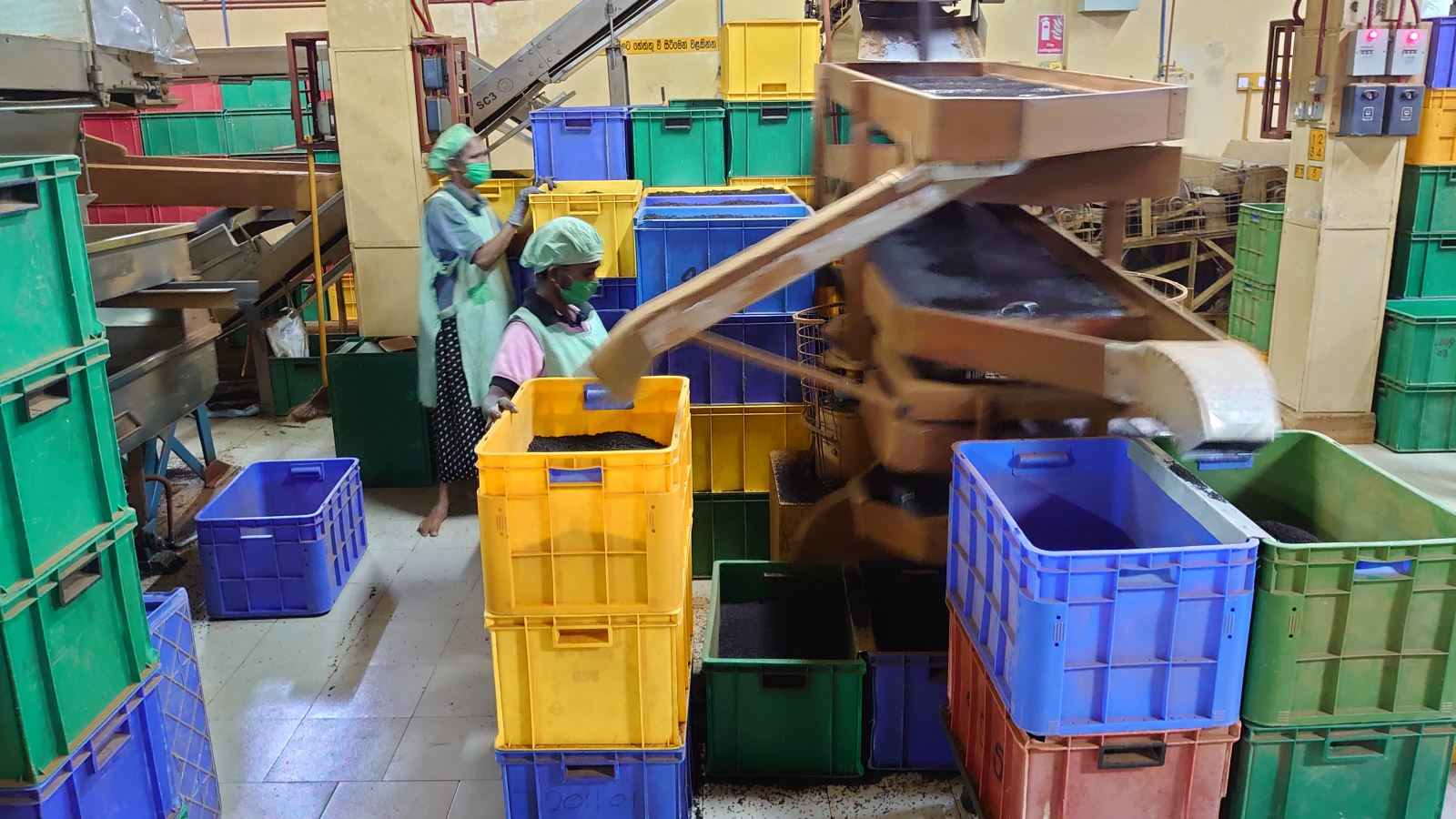 And all remaining tea is sold as tea in different grades. The most classics are OP and OP1 grades (orange pekoe, in Sri Lanka these are wiry looking whole leaf teas, where OP1 will be smaller from less developed younger leaves), OPA is more open, less wiry and bigger leaves and it gives more lighter liquor compare to OP/0P1. PEKOE is one of more common grades more twisted into bowls with again PEKOE1 will be from smaller leaves of higher quality (please do not follow information about flush with three leaves and bud). This is true nonsense even on Wiki BOP (Broken Orange Pekoe), it is commonly lower grade compare to OP/OP1 quite useful for pyramid bags, gives a good tea), nevertheless higher and really good tea is from FBOP/FBOP1 (the first F means Flowery, containing no flowers, but a bit of tippy tea. Tippy are parts from buds (early undeveloped leaves) giving shiny whitish look). The price of FBOP1 can exceed prices of OP/OP1. In this factory they have even four (that is a lot, normally I have never seen more than two) sorting machines to gain tipsy teas (colouring sorting). You can get grades FBOP EX SP, FBOPF EX SP or FBOPF SP (EX SP means extra special and the second F means fanning as structure is quite small, but gives unique very aromatic teas of highest quality). This is most common in low grown regions, nevertheless we had chance to see completely new installation in Kenmare too, Nuwara Eliya region.
And all remaining tea is sold as tea in different grades. The most classics are OP and OP1 grades (orange pekoe, in Sri Lanka these are wiry looking whole leaf teas, where OP1 will be smaller from less developed younger leaves), OPA is more open, less wiry and bigger leaves and it gives more lighter liquor compare to OP/0P1. PEKOE is one of more common grades more twisted into bowls with again PEKOE1 will be from smaller leaves of higher quality (please do not follow information about flush with three leaves and bud). This is true nonsense even on Wiki BOP (Broken Orange Pekoe), it is commonly lower grade compare to OP/OP1 quite useful for pyramid bags, gives a good tea), nevertheless higher and really good tea is from FBOP/FBOP1 (the first F means Flowery, containing no flowers, but a bit of tippy tea. Tippy are parts from buds (early undeveloped leaves) giving shiny whitish look). The price of FBOP1 can exceed prices of OP/OP1. In this factory they have even four (that is a lot, normally I have never seen more than two) sorting machines to gain tipsy teas (colouring sorting). You can get grades FBOP EX SP, FBOPF EX SP or FBOPF SP (EX SP means extra special and the second F means fanning as structure is quite small, but gives unique very aromatic teas of highest quality). This is most common in low grown regions, nevertheless we had chance to see completely new installation in Kenmare too, Nuwara Eliya region.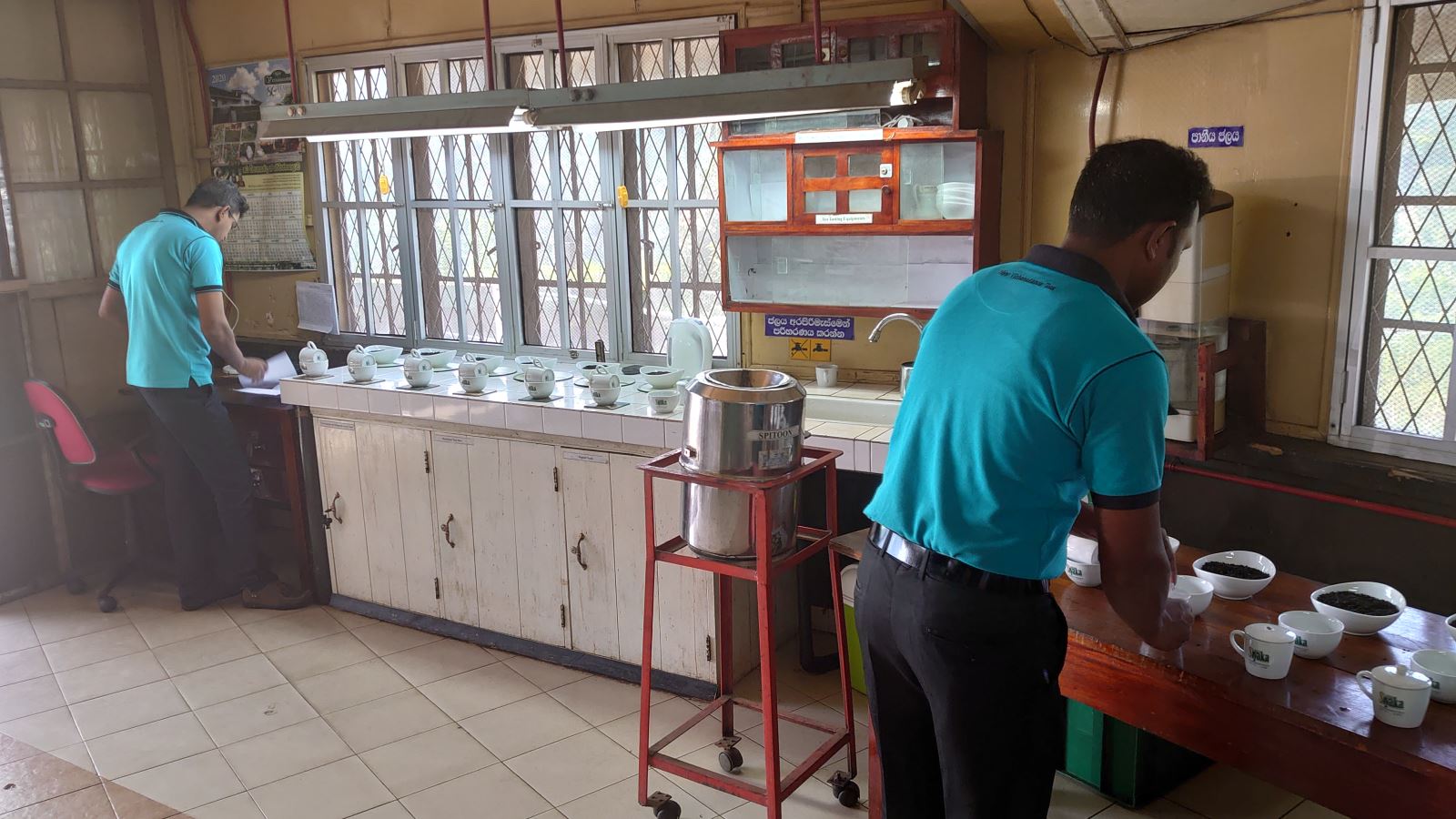
New Vithanakande factory gets its reward for its care about quality on the auction in Colombo. They reach premium price for their tea quality compare to other factories from the region. And it is also reflected they can pay to farmers premium for its fresh tea leaves. I wanted to show on this example to have a name of factory means not much for regular consumer, who does not have any deep
knowledge. It is also true, some really good names lose their quality in time and it is not same as it was, due to many aspects (different manager, problems to get good or enough leaves etc…). It is important to get advice look at grades in order to get adequate taste as well as your preferred region. Generally low grown are stronger more earthy tastes and darker liquor compared with high grown richer aroma and more delicate and rich in flavours. You can see cupping at one of the pictures from a factory. And you can imagine Vintage Teas has only in purchasing department ten people engaged in cupping the samples (12.000 samples every week) to be ready for auction.
The text you have just read is related to black orthodox teas (not CTC, what I will try to explain once in future and not for green tea too, which is unfermented one)
In case you like to learn complete grade list see:
http://teasrilanka.org/tea-grade
